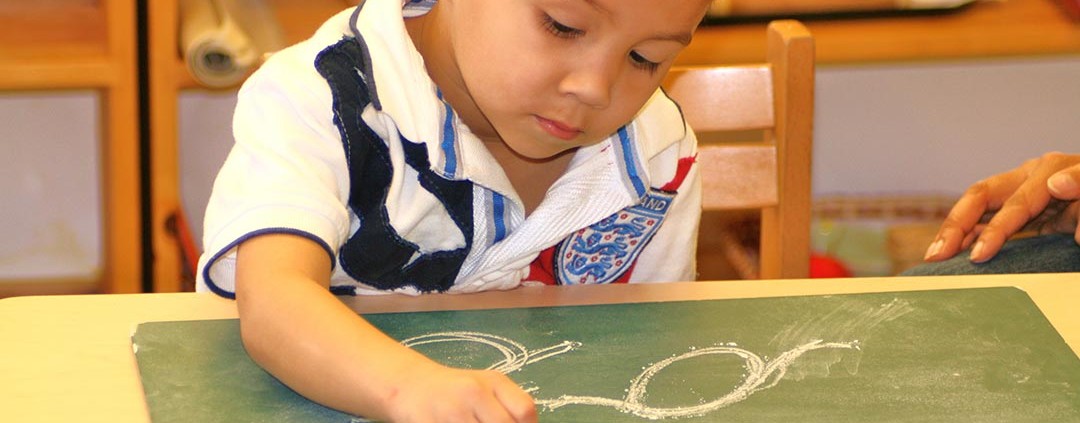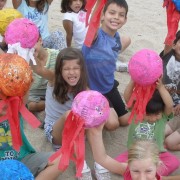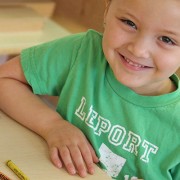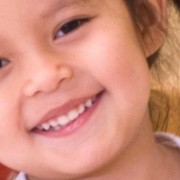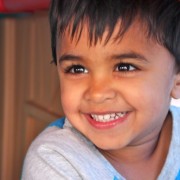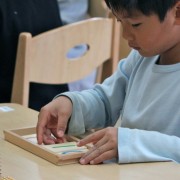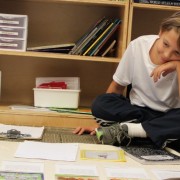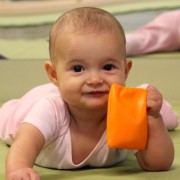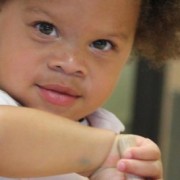Is Montessori Preschool Worth It For Just 2-3 Years?
This week, a parent asked the following question on Berkley Parents Net, a well-read Bay Area forum:
Hi there,
We are looking for preschools for our daughter, and are wondering about parents’ thoughts on whether sending your child to Montessori for just 2-3 years is worth the cost over other play-based daycares. We can’t afford to do a Montessori school for her whole education–do the two years make a difference?
Thanks for your thoughts!
Parent on Berkley Parents Net
It’s a good question, and one that I bet many parents have.
At age six, my daughter just completed a mid-year move-up from the Montessori preschool class to the Montessori elementary class, after about 3 years in the Montessori program at two different Montessori preschools, and my answer is a qualified yes—if two conditions are met.
- Even 2-3 years of Montessori preschool can have a huge impact, especially if you can make it possible for your child to stay through the critical third year of Montessori primary (the equivalent of traditional kindergarten.) Montessori preschool, done well, is a 3-year cycle: a child typically starts at age three, and spends a lot of time learning foundational skills during the next two years. He’ll strengthen his arm, wrist and hand muscles doing activities such as pouring water, washing tables, transferring objects with spoons etc. He’ll develop the skill of concentrating, by building the pink tower, matching sound cylinders, and making maps of the world by tracing puzzle pieces and coloring in the maps. He’ll be introduced to the letters of the alphabet with sound games and by tracing sandpaper letters; he’ll begin to build words with the moveable alphabet, and start to learn about math with number rods, spindles, and the bead materials.
If he attends right from age three, then by age 5 (i.e. before kindergarten), he’ll typically have learned his letter sounds, will be able to write the letters and sound out simple words. He’ll have learned the basics of numbers to 100 and beyond. He’ll be able to choose activities independently, complete multi-step processes, focus on a task for an hour or more. He’ll have developed strong social skills: taking turns with materials, sitting attentively at group time, asking for help politely without interrupting, and looking out for his peers, helping younger ones at tasks he has already mastered. All of these will get him more than ready for traditional kindergarten: in fact, many Montessori 5-year-olds have already accomplished most of what is expected of children by the end of Kindergarten! Yet it would be a shame to take him out of Montessori at this point…
Because then, in the third year, the magic happens: with the careful preparation of the prior two years, most Montessori children make a HUGE leap in their capabilities during the third year in the program. Suddenly, they go from sounding out individual letters, to reading 2nd or 3rd grade level books. They go from carefully writing a few words, in still tentative cursive, to writing multi-sentence stories, in handwriting that’s better than that of many 2nd or 3rd graders. And they get math, progressing from concrete materials (like the Golden Beads) to arithmetic into the thousands.
I’ve just seen it with my daughter: In September, at the beginning of her 3rd year in Montessori primary (the time she’d have entered kindergarten), she read longer, but still phonetically controlled books, like Mr. Sanchez and the Kickball Champ. Now, shortly after she turned six, she’s able to read real books, reading aloud entire shorter books like Amelia Bedelia or Poppleton to us,or alternating pages with me as we read chapter books like The Boxcar Children or In Aunt Lucy’s Kitchen. She writes longer stories, and her handwriting has become much more neat and consistent.
After three years in the Montessori classroom, she’s not only made great strides in academics; she’s learned that work is fun (the story in the picture is a voluntary, Saturday-morning effort, not required homework); she can focus for hours at a time, a crucial prerequisite for all future schooling. She’s independent in fulfilling her own needs, making her own snacks, helping with cooking at home, taking a shower on her own, and getting herself ready for school and bed with nary any assistance from us. And, maybe most importantly, she’s developed a great self-confidence in her ability as a learner, and an eagerness to mentor and help others (including her little brother, at least most of the time.)
If our daughter were to go to traditional school for first grade next fall (which she won’t), my main concern would be that she’d be bored, and that she wouldn’t be happy at being told to do things in lockstep with a large group of children. She’d probably resent the mindless worksheet work all too common in many other schools, and the need to do busy-work homework with limited choices. But at least she’d have learned to love learning, she’d have mastered reading, writing and the basics of arithmetic, so that no matter what class she’d enter, or what teacher she’d encounter, the basics would be there, for life.
- Make sure that you enroll in a real Montessori preschool. Unfortunately, the name Montessori alone doesn’t mean much: it’s not trade-marked, and anybody can call their preschool Montessori, whether or not they abide by the philosophy. Many preschools, in fact, take some pieces of Montessori, but then mix it up with different ideas, so that some preschools are really mostly play-based preschools, with some Montessori ideas and activities thrown in.
So what is a parent to do? I didn’t know much about Montessori four years ago, so I picked a “Monte-sorta” preschool for our daughter, and later found I needed to move schools to give her a real Montessori preschool experience all the way through her third year of the three-year Montessori cycle. Now, I have a cheat sheet for you: here are four things to look for in assessing whether a school is a true Montessori preschool.
- Mixed-age preschool classrooms: ages 3-6 in one class. Much of the Montessori preschool magic depends on a family-like community of mixed ages, where one teacher leads a child through three years of development. So ask each school you consider, before you even tour: do you have mixed-age classes, or do you separate out the kindergarten aged children? Many schools bow to convention and have narrower age ranges (2-3, 3-4, Pre-K, K): those are not authentic Montessori programs.
- A three-hour, child-led “work period.” Freedom of choice and time for child-led, uninterrupted exploration of the Montessori materials is indispensible for your child to have the full benefit of Montessori. Good schools offer 2 ½ to 3 hours of “work time” in the morning, and 2 hours in the afternoon—time that’s not interrupted by any mandatory group activities, such as circle, snack, or teacher-led arts & crafts. Many so-called Montessori schools instead have at most 90 minutes of work time, and then lots of play-based type group activities.
-
AMI or another year-long, in person Montessori training. Being a Montessori teacher is a challenging calling: the teacher must master hundreds of activities, each of which have special ways of presenting them, all of which need to be taught in a certain order, and only when a child is ready for them. That’s why the best training programs, such as that offered by the Association Montessori Internationale (AMI), take a full year of full-time, on-site training under the guidance of master instructors—and why the best Montessori schools then pair up new teachers with a more senior, Master teacher, for at least 6-9 months, to learn the craft. Be wary of teachers who only have a “quickie” training, have learned their craft via a distance, internet learning course, or who are only trained “in house.” While some of these may be wonderful teachers, you can’t assume that; you’ll want to spend a lot of time observing in their class, or ideally have a knowledgeable Montessorian observe in the class to assess whether the teacher able to implement an authentic Montessori preschool program.
- Teaching cursive handwriting. Most Montessori preschools, even some excellent ones, have bowed to the unfortunate standard of teaching print for handwriting first, then re-training children in 2nd or 3rd grade to write cursive. If you see a preschool that teaches cursive from the start, as intended by Dr. Montessori because it is consistent with a child’s motor development needs, this is a good indication that the school is taking Montessori seriously, and is willing to do what’s right, even if it’s not the easy path. But don’t take the lack of cursive as a death blow: while the first three criteria are must-have items for great Montessori preschools, this last one is just an indicator, and I wouldn’t throw out an otherwise good preschool if it taught print.


